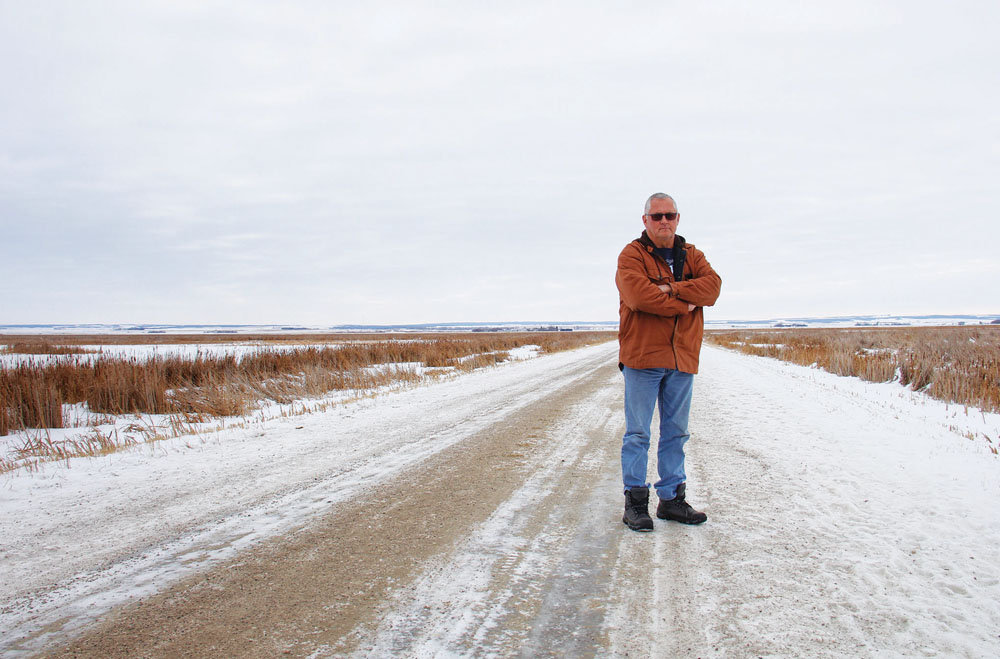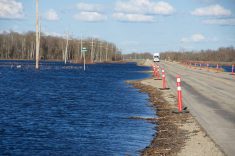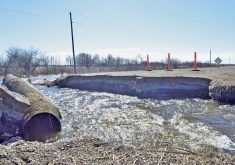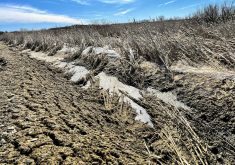A decade ago, Whitewater Lake began swallowing land.
Barry Janssens watched the flood waters creep into his fields with every rainfall until nearly 500 acres had disappeared beneath water and cattails.
The lake is frozen and snow covered now. He drives with a reporter along a gravel road a few miles from Deloraine — essentially a causeway through the ice.
“This whole section was farmable,” he says.
The reporter points out an object among the cattails. Janssens says it’s a pickup truck. It got stuck in 2010. In 2011 the water rose, and now the truck sits with water up to the tailgate.
Read Also
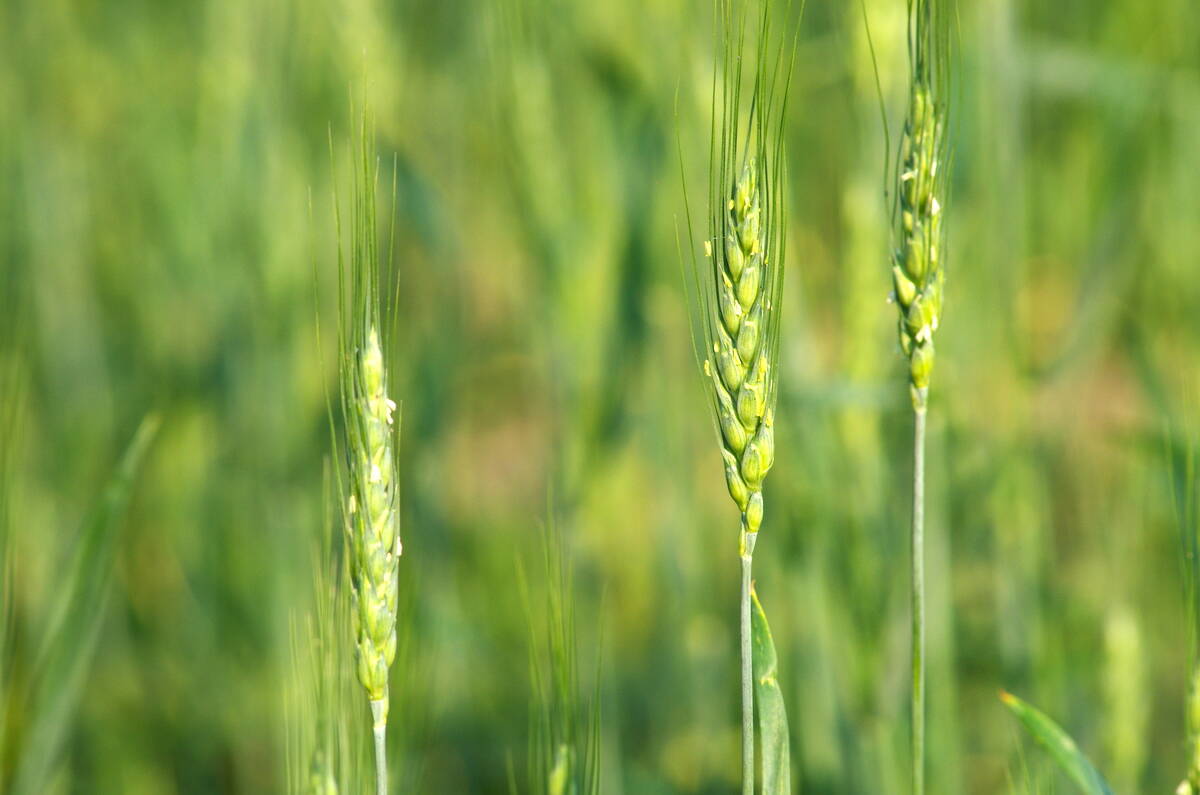
Code cracked on nitrogen-fixing wheat?
U.S. crop breeders have created a wheat variety capable of fixing its own nitrogen rather than relying on fertilizer.
“The dollars that have been lost in 10 years is just phenomenal,” Janssens says. He estimates it’s millions from farmers and municipal coffers.
Residents around the lake have held town hall meetings. The municipalities have put together studies and working groups. Yet the water remains.
“And there’s a lot of, well, frustrations,” Janssens says. “For me at my age, trying to retire. You can’t sell (the flooded land). Who’s going to buy it?”
His farm is listed on an auction site. His jaw tightens when it’s brought up.
“I’ve just had enough,” he says.
East of Janssens, Trevor Hartel and his dad farm about 3,000 acres of grain and oilseed. Between 300 and 450 acres are under water, but the effects are slowly encroaching on the rest.
“There’s more salinity showing up all the time in our fields,” Hartel tells the Co-operator. Some areas won’t even grow weeds, he says.
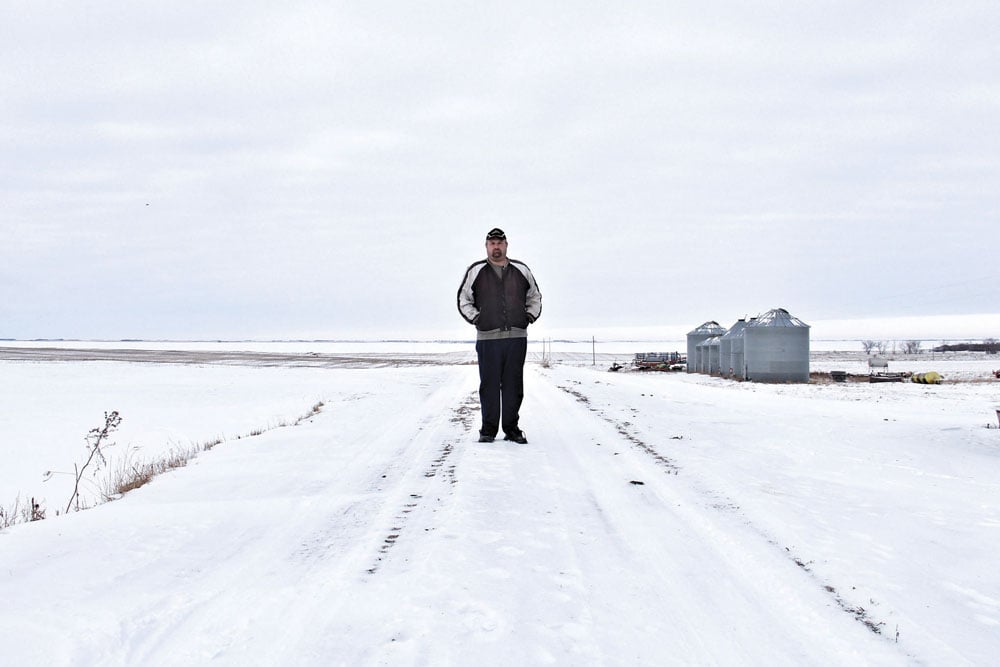
Hartel takes pains to be clear — he doesn’t want the lake drained. He just wants it controlled enough to get his land back.
Water, water everywhere
Deloraine-Winchester Reeve Gord Weidenhamer estimates flooding has affected about 10,000 acres total and about 6,000 acres of farmland around Whitewater Lake.
The lake is called a ‘terminal basin.’ It’s the landing point of run-off from the surrounding landscape — Turtle Mountain in this case — and has no natural outlet. Water stays until it evaporates.
During drought, the lake can go dry — it did in the 1930s and 1980s, according to the Whitewater Lake Manitoba website.
The water began to rise in 1999, Weidenhamer said. In the next decade it continued to climb and peaked in 2011.
The rise coincides with a prolonged wet cycle of 10 to 15 years, said Richard Grosshans with the International Institute for Sustainable Development.
In 1971 and 1976, the PFRA and the Water Resources Branch studied plans to dig an outlet channel from the lake to Medora Creek, a seasonal stream west of the lake near Deloraine, according to documents from Turtle Mountain Conservation District.
In 2011, the RM of Morton proposed digging a 1.1-mile channel from the lake to Medora Creek and “upgrading” a 1.4-mile section of the creek at a cost of $292,000, according to documents from TMCD. However, studies showed the outlet would have a small impact on the long-term water balance of the lake.
According to the document, the 1976 study suggested expanding Medora Creek to handle an additional 100 cubic feet of water per second, which was estimated to cost about $2.5 million in 2011.
Weidenhamer said a working group formed by the affected municipalities proposed dual outlets, one at Medora Creek in the west and another at Elgin Creek to the north. Plans were to drain the peak flow during major rains.
Janssens said he and some other farmers proposed to dig a channel, at their own expense, through a road allowance where the water had forced a natural channel to Medora Creek.
According to a provincial spokesperson, a working group of affected municipalities filed an Environmental Act Proposal for lake regulation and an outlet in 2016. The spokesperson said the province has met with the group several times, and concerns from downstream landowners were raised.
The group has been working on addressing concerns and reaching a local consensus on the project since 2017, the spokesperson said.
“The province has indicated a willingness to consider pilot initiatives to acquire additional useful information on outlet configurations, but a local consensus on a solution has not yet been obtained,” the spokesperson said in an emailed statement.
To date, no drainage project has been approved.
Drainage unchecked
It’s a complex issue with complex solutions, Grosshans said.
Yes, a prolonged wet cycle has flooded the lake, but the surrounding countryside has also seen a “severe” increase in drainage, Grosshans said.
“Where does it go? It ends up in Whitewater Lake.”
According to Ducks Unlimited, settled areas of Canada have seen up to 70 per cent of wetlands lost — much to agriculture. This has reduced the land’s ability to hold water — in both wet and dry cycles.
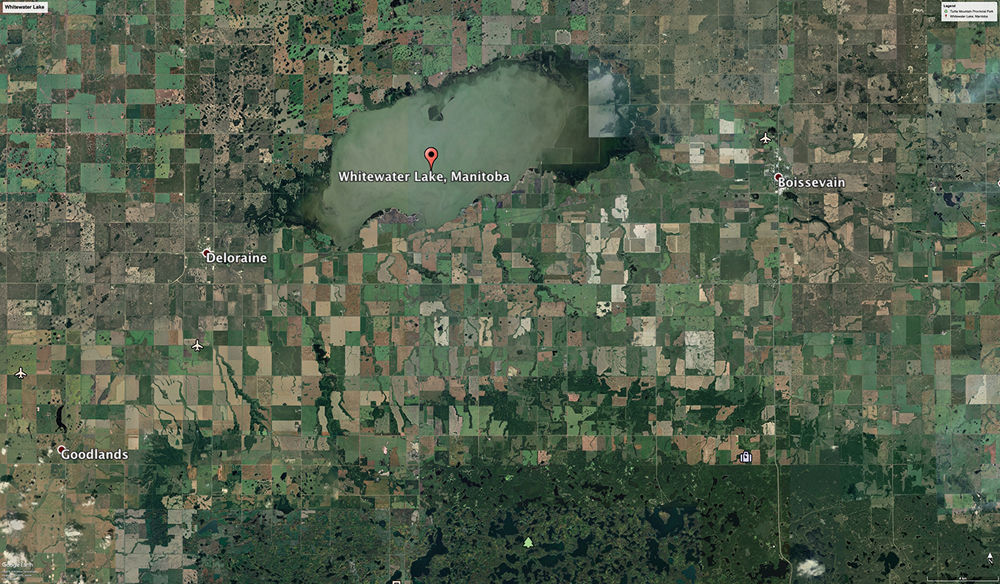
That’s important in increasingly volatile weather, Grosshans said. This year we saw drought and flooding in the same year, he said. Spring run-off is less of a concern, superseded by summer and even fall run-off.
“There’s not the resilience on the land that there once was,” said Yasemin Keeler, a manager in the Souris River Watershed District.
Cutting a channel would take the water and move it into the Souris River, which Grosshans said is already prone to intense flooding. He said adding more water to the Souris River could be “catastrophic” in some cases.
There are also concerns about water quality and invasive species, he added. This was an issue with Devils Lake in North Dakota.
Devils Lake, also a terminal basin, began to grow in the early ’90s, swallowing farmland and towns until two drainage channels were cut — one in 2005 and one in 2011.
The controversial outlets pumped millions of cubic feet of dirty, salty water into the Red River watershed, according to a 2015 report from the Winnipeg Free Press. A bitter dispute over the outlets raged for years.
In 2008, a Manitoba government news release claimed that after three years the outlet had reduced the lake’s water level by the thickness of a few sheets of paper.
No quick fix
Keeler said in the absence of the option to drain, her watershed district is focusing on the lake’s headwaters on Turtle Mountain. They’re promoting cover crops, polycrops and tree planting to increase water infiltration to the soil. They’re also working on water-retention projects.
Keeler said the district is also applying to the province’s GROW Trust for funding so they can look at establishing an ALUS program, which could pay landowners to hold water on their land — for which Hartel and Janssens were in favour.
This project is still in its early stages, Keeler said.
Grosshans said good upstream management and water retention have gained momentum with the watershed districts, which will be aided by the GROW program.
“That definitely all helps to reduce flooding downstream,” he said.
He added that systems need to be designed to hold water so it’s available during drought.
“This is happening globally,” he said. “We need to adapt. We need to change the way we do things.”
There likely is no quick, healthy fix for Whitewater Lake, Grosshans said. The damage is already done.
“We’re definitely trying to backpedal a bit,” he said.
He acknowledged this isn’t an easy thing to say to people affected by flooding now.
For Janssens and Hartel, the problem is immediate. After fall brought heavy rains, they’re eyeing the piling snowdrifts with a wary gaze.
“If we have a spring anywhere near as close as we did the fall, it’s going to be a major issue again because there’s going to be not just farm flooding,” Hartel said. “I think the town of Deloraine’s going to be in trouble.”


